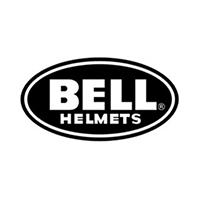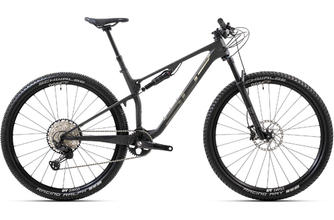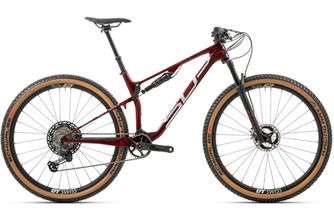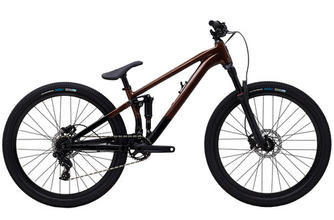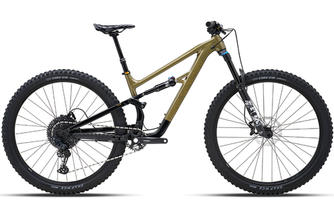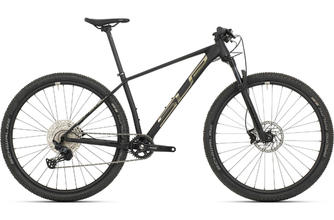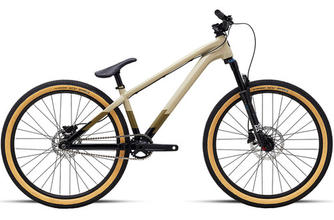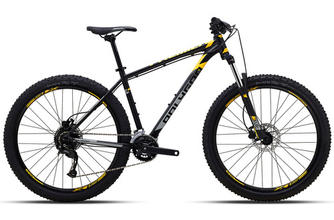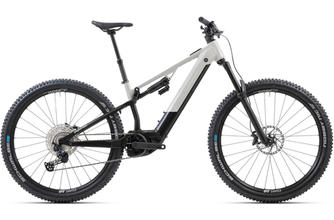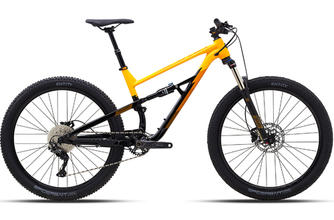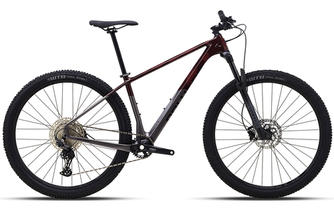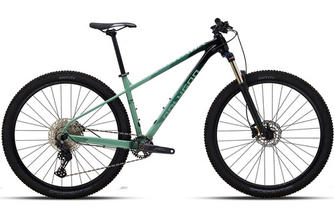Mountain Bikes
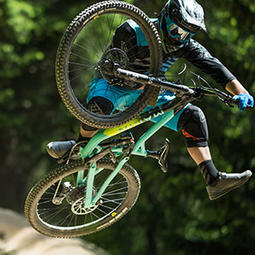
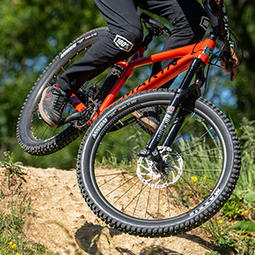
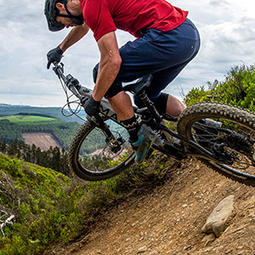
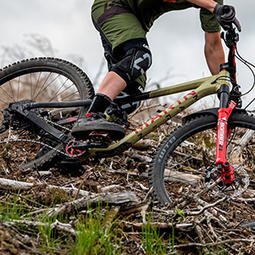
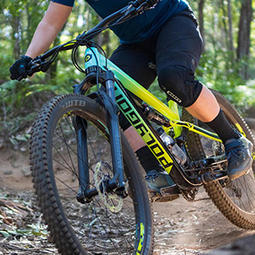
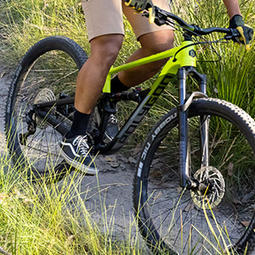
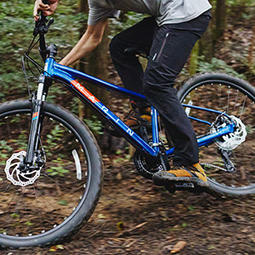
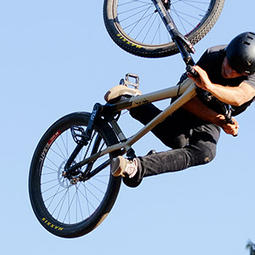
Dual suspension bikes are built to have optimised traction, comfort and rideability thanks to both wheels travelling up and down. The wheels don't just move up and out of the way of obstacles; they also maintain constant traction with the ground. Thanks to these features, riders can push their limits further and ride harder, thanks to the bike doing more work for you. Dual Suspension Bikes are also safer because they can better compensate for rider errors. The downside of some dual-suspension bikes is extra weight, and they can be slightly less efficient while pedaling. Due to the additional technology, they cost more as well.
Hardtail mountain bikes are perfect if you are on a budget, want a light bike and prioritise efficiency. They are great for riding around town, attacking XC climbs, and challenging your skills on the downhills. While they are often associated with XC and Entry-level bikes, some modern hardtails are built to tackle downhill runs and attack difficult features. Hardtails are extremely capable under the right rider and will have no issue being pushed hard. If you want something comfortable to commute on or start exploring the outdoors, these bikes are perfect. However, hardtails require more skill to ride fast because they offer less traction than a dual suspension bike and are less comfortable in the saddle over rough terrain.
Ideal for. E-Bikes are ideal for when you want to ride further without fatigue. E-Bikes come with pedal assistance to make the climbs a breeze so you can be ready to carve up the downhill and then do it all again. If you want to ride more in less time, E-Bikes are perfect for you.
Ideal Terrain. E-Bikes come in all shapes and sizes, matching the genres described above. They are built to take on challenging downhills and hit bigger trail features with ease.
E-Bikes come with stiffer suspension, bigger brakes and strong wheels so they can ride through anything. The best bit is, you can turn around and ride back to the top with ease thanks to the motor providing assistance.
Ideal for. If you are out on the bike to tackle the toughest downhill trails but want to pedal back to the top, Enduro Bikes are for you. Built for stability at speed while hitting difficult obstacles, agile enough to turn on a dime, and with a wide range of gears to get you back to the top. Enduro bikes are also perfect for shuttle or uplift days when all you want to do is bomb down the local downhill tracks.
Ideal Terrain. Enduro Bikes eat up the rocks and roots while remaining poised for jumps and drops. Longer travel suspension is ideal for maintaining traction in loose and fast conditions as you barrel at full speed down the hill. These bikes are perfect if you love the thrill of downhill and want to take on your local Enduro race.
Ideal for. Riders who don't have a plan, enjoy riding varied terrains and attack the downs as much as the ups will love a trail bike. If you want to ride everything from fast-flowing Downhill to challenging climbs and then pedal back home, a Trail bike is perfect. Riders looking to do all day epics on all types of trails will love a Trail bike.
Ideal Terrain. A Trail Bike will always have your back when you explore new territory without knowing what lies ahead on the trails. Whether you want to challenge technical Downhill trails after climbing to the top one week, then ride an all-day epic the next, a Trail bike will be your best trail buddy. Trail Bikes are ideal for all terrains.
Ideal for. bikes are ideal for those who love to attack the climbs or want a super-efficient bike for sprinting off the start line. Cross Country bikes are light, stiff and spritely. They leap forward when you put the power down off the start line, get out of the saddle on a steep climb, or race to the finish line. The Cross Country Bike is for those who are after speed, efficiency and agility.
Ideal Terrain. If you want to prioritise the climbs over crazy downhill tracks and enjoy traversing mountains, then a XC bike is for you. Cross Country bikes are perfect for making tame trails more exciting. A light, stiff Cross Country bike will make life easier if you want to attack technical climbs. Under skilled riders, XC mountain bikes are extremely capable. However, if you are a less talented rider, riding steep downhill trails can be challenging.
Cycling to the mountains is the perfect escape from the hustle and bustle of everyday city life. You may yearn for the next adventure simply because there's something rejuvenating about mountain bikes on high terrain. A temporary escape to unwind and gather your thoughts while taking in breathtaking views.
Mountain biking is a total body workout without trainers or gym memberships. You only need to buy a suitable mountain bike, riding apparel, protective gear, and accessories to start. Aside from emotional and mental health benefits due to tranquil nature sceneries, cycling offers excellent physical fitness advantages, making it viable as a weekend exercise.

 USA
USA AUS
AUS







